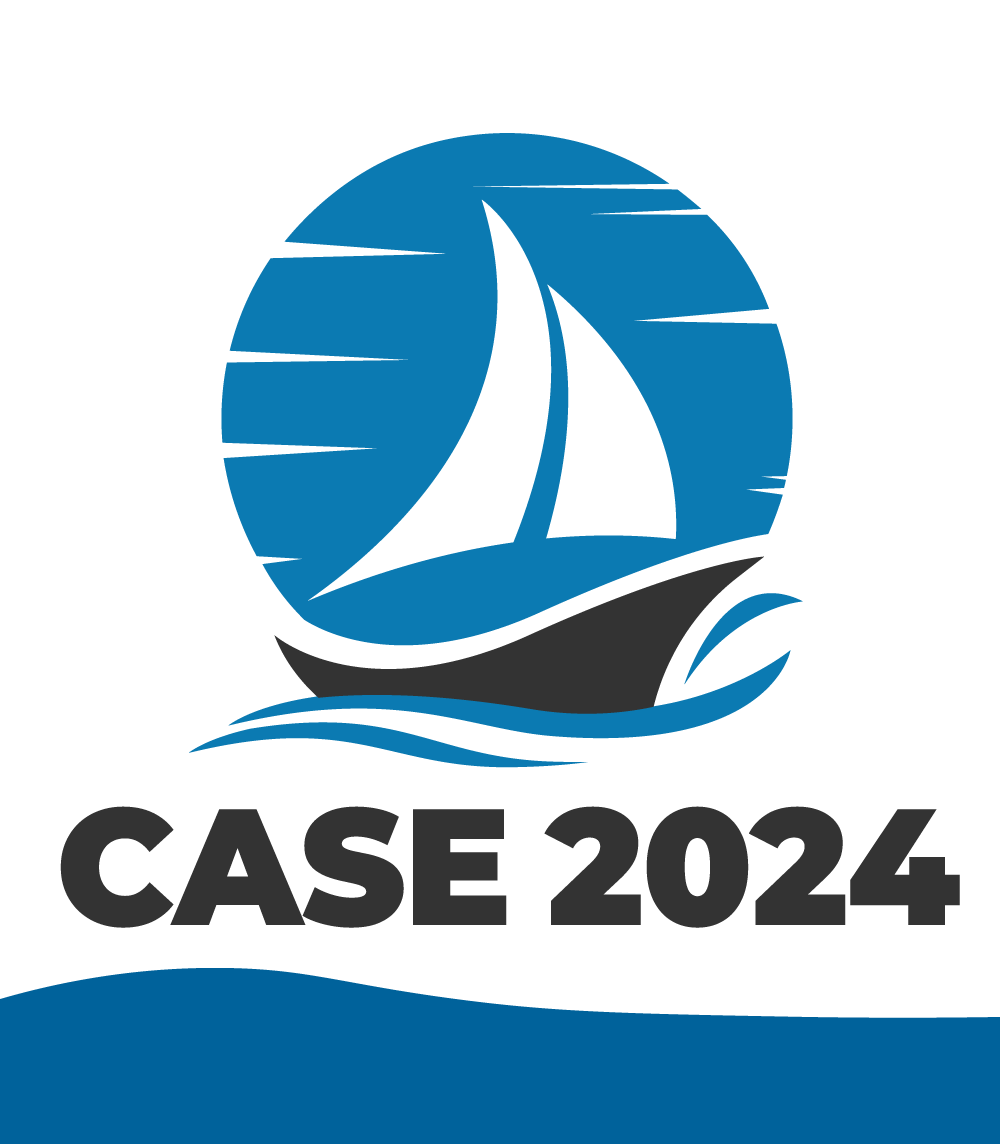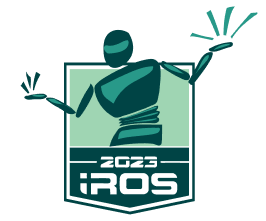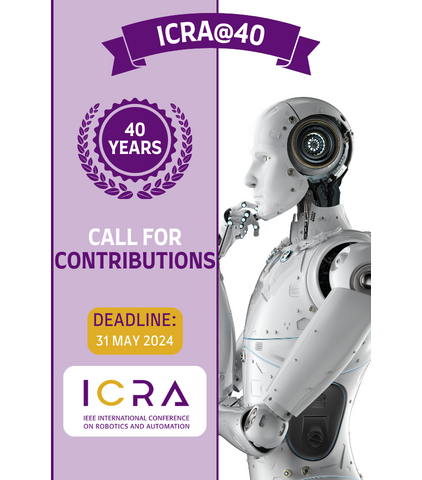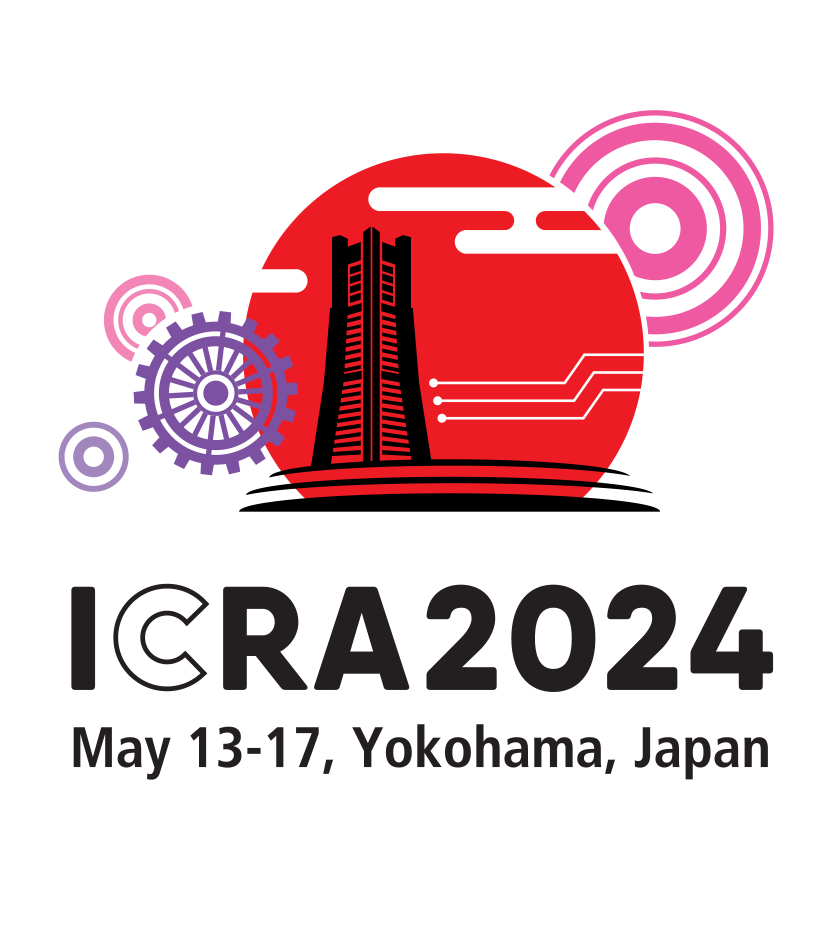Latest News
Call for Papers: IEEE RA-L Special Issue on Learning and Control for Autonomous Manipulation Systems
We are pleased to announce an IEEE Robotics and Autonomous Letters (IEEE RA-L) Special Issue on “Learning and Control for Autonomous Manipulation Systems: the Role of Dimensionality Reduction”
Please, visit the official webpage of the Special Issue at
http://www.ieee-ras.org/publications/ra-l/special-issues/learning-and-control-for-autonomous-manipulation-systems-the-role-of-dimensionality-reduction
SUMMARY
The special issue presents a hot topic in robotic manipulation that is how to merge learning and control strategies to provide autonomy to robotic systems. This is a fundamental problem for robotic manipulation and it touches different functional system levels based on both visual and tactile perception and also affects the mechanical design of the robot parts that move and interact with the environment. The anthropomorphism contemplated in the mechanical design encourages the inspiration of learning techniques and control from the functioning of the human being. This implies the involvement of a large research community not only in the field of robotics but also the community of neuroscientists. The problem is highly multi-disciplinary, and different approaches from control theory, machine learning, and artificial intelligence, will be compared and possibly combined.
MOTIVATION
The topic of this Special Issue was the subject of a full-day workshop “Learning and control for autonomous manipulation systems: the role of dimensionality reduction”, organized at ICRA 2017 by the guest editors. The large attendance (among 80-100 participants), the quality of the speakers, and the relevance of the addressed topics of research have been key elements for the success of the workshop. The Special Issue wants to collect an even broader scope of contributions, and make them available in archival format.
TOPICS OF INTEREST
Dimensionality reduction in anthropomorphic design
Mechanical and motor synergies
Perceptual and sensorimotor synergies
The role of dimensionality reduction in learning strategies
The role of dimensionality reduction in control strategies
GUEST EDITORS
Fanny Ficuciello(University of Naples Federico II)
Pietro Falco (Technical University of Munich)
Sylvain Calinon (Idiap Research Institute)
TIMELINE
Special Issue Call Publication: 1 August 2017
Special Issue Submission Opens: 5 October 2017
Special Issue Submission Closes: 15 October 2017
First Decision Communicated to Authors: 9 January 2018
Final Decision Communicated to Authors: 15 March 2018
Accepted RAL Papers appear on Xplore: 3 April 2018
We are pleased to announce an IEEE Robotics and Automation Letters (IEEE RA-L) Special Issue on "Aerial Manipulation".
Authors submitting their work to this Special Issue will have the opportunity to present their work at the forthcoming ICRA 2018 conference in Brisbane, Australia (see the details below).
Please, visit the official webpage of the Special Issue at http://www.ieee-ras.org/publications/ra-l/special-issues/aerial-manipulation
Motivations and Objectives
The introduction of aerial manipulation can be helpful especially in those industrial and service applications that are considered very dangerous for a human operator. For instance, think to a task of bridge inspection, high-voltage electric lines inspection and fixing-up, rotor blade repairing and so on. These tasks are both unsafe and expensive, since the performance of professional climbers and specialists is requested. An unmanned aerial manipulator might indeed assist the human operator in these jobs or, at least, in the most hazardous and critical situations. Grasping an object during the flight with a UAV (equipped with only a gripper) poses several problems due to the under-actuation of the aerial vehicle, its unstable dynamics, and the coupling effects given by the presence of the object. The bigger the carried payload, the bigger should be the capacity of the single employed UAV. However, the sole gripper is not enough to obtain a complete evolution from passive into active tasks of the unmanned aerial vehicles: mechanical structures mounted on the UAVs are then essential to perform more complex actions. Therefore, an aerial manipulator might be an efficient solution providing an aerial vehicle with the capability of performing dexterous manipulation tasks. Nevertheless, like the presence of a carried object creates coupling effects in the dynamic model of the system, a mounted robot arm provides even more issues since its dynamics depends on the actual configuration state of the whole system.
The Special Issue will thus cover several aspects spanning from the mechatronic design of novel aerial manipulator, to the use of sensors necessary to accomplish the sought tasks, and the use of motion planning and control techniques. This may also be a great opportunity to stir the current idea of aerial robotics that is too much conceived as simple inspection and sensing applications. Aerial manipulation is a great research challenge and this might be a chance to collect the most recent results of the field to enhance the autonomy requested to fulfill the addressed tasks.
List of Topics
The list of topics include, but it is not limited to:
- Control of aerial manipulators
- Control of UAV in contact with the environment
- Motion planning of aerial manipulators
- Perception in aerial manipulation
- Mechatronic design of aerial manipulators
Important Dates
- Special Issue Submission opens: 1 September 2017
- Special Issue Submission closes: 10 September 2017
- First Decision Communicated to Authors: 5 December 2017
- Final Decision Communicated to Authors: 8 February 2018
- Accepted RA-L Papers appear on IEEE Xplore: 27 February 2018
Guest Editors
Vincenzo Lippiello (Università di Napoli Federico II)
Fabio Ruggiero (Università di Napoli Federico II)
Anibal Ollero (Universidad de Sevilla)
Organization of the Submitted Papers
Papers are six-page long in two column IEEE format, including figures and reference. Up to two extra-pages (at fee) are allowed. Links to multimedia material are welcome. RA-L is an electronic-only journal. The final version provided by the authors will be rapidly posted on IEEE Xplore: submitted manuscripts will be either published within 27 February 2018 or rejected.
Submission of the Papers
In order to submit the paper:
- Go the RA-L PaperCept site http://ras.papercept.net/journals/ral
- Log-in and select to submit a new paper to IEEE RA-L.
- From the drop-down menu, select "Submission for RA-L and ICRA Special Issue on Aerial Manipulation"
- Follow the instructions to submit your material.
More information can be found at the following link: http://www.ieee-ras.org/publications/ra-l/submission-procedures
Information about IEEE RA-L + ICRA 2018
All the information about the IEEE Robotics and Automation Letters can be found at the following link:
http://www.ieee-ras.org/publications/ra-l
To recap, the scope of this journal is to publish peer-reviewed articles that provide a timely and concise account of innovative research ideas and application results, reporting significant theoretical findings and application case studies in areas of robotics and automation.
All the papers submitted to such RA-L Special Issue will undergo a regular RA-L review. Results of the first review round by the Letters Editorial Board will also be used by the ICRA 2018 Editorial Board, which will decide the program of the Conference. Notice that the final decision on publication on RA-L and presentation at the Conference are completely independent. More details about RA-L submission with conference option can be found at the following link: http://www.ieee-ras.org/publications/ra-l/ra-letters-information-for-authors
The International Conference on Robotics and Automation (ICRA) is the IEEE Robotics and Automation Society's flagship conference and is a premier international forum for robotics researchers to present their work.
ICRA 2018 will be held on 21-25 May 2018 in Brisbane, Australia: http://www.icra2018.org
The IEEE Robotics & Automation Society is seeking qualified recipients for our presitgious awards!
The Nomination Deadline is Tuesday, 1 August.

Who are the Leaders in the robotics and automation field? Who should be honored with a prestigious IEEE RAS Award? Consider nominating them! But hurry, the deadline for IEEE Robotics & Automation Society Award nominations is midnight (US EST) 1 August 2017.
Details for each award, including eligibility, nomination requirements and lists of previous recipients, may be found at www.ieee-ras.org/awards-recognition/society-awards
Erwin Prassler (B-IT and Vice President of IEEE RAS for Industrial Activities)
Arturo Baroncelli (Comau and Former President of IFR)
Since the first edition at ICRA 2005 in Barcelona, Spain, the IEEE/IFR Award for Invention and Entrepreneurship in Robotics and Automation has become one of the most renowned non-scientific awards in the robotics community, and has attracted more and more applications in every year. It’s uniqueness is also due to the fact that it is a joint award given by the robotics industry, represented by IFR the International Federation of Robotics, and the robotics research community represented by the IEEE Robotics and Automation Society. The award is a vital demonstration that robotics industry and research do work together very successfully.
The competition for the 2017 edition of the IERA Award was remarkable in terms of the number of applications as well as in their quality. A jury composed of three members of the IEEE Robotics and Automation Society and three members of the International Federation of Robotics finally selected the following four finalists:
- Marco Hutter, ANYbotics AG, ANYdrive: A modular joint actuator for advanced interacting robots
- Jody Saglia, Movendo Technology s.r.l.: Hunova - an easy to use and intuitive medical device
- György Cserey, OptoForce Ltd: Sensing flexibility - 3D force and 6-axis force/torque sensors for industrial robotic applications
- Steve Cousins, Savioke: Relay autonomous delivery robot
The finalists had the opportunity to pitch their business idea at ICRA 2017, Singapore, to the jury and to the large audience of ICRA participants.
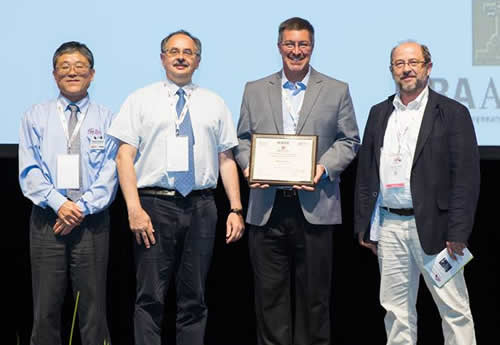
The winner by unanimous decision:
Steve Cousins, Savioke: Relay autonomous delivery robot
All finalists have the opportunity to describe their business idea in the next edition of the IEEE Robotics and Automation Magazine. The 2018 edition of the IEEE/IFR IERA Award, which will be renamed the IEEE/IFR Award for Innovation and Entrepreneurship in Robotics and Automation, will be organized by IFR during Automatica and ISR 2018.
2017 IEEE/RSJ International Conference on Intelligent Robots and Systems (IROS'17)
Vancouver, Canada
24 - 28 September 2017
http://www.iros2017.org/
Entrepreneurship Forum and Start-up Competition (EFSC) 2017
26 September 2017
http://iros2017.org/program/forums/efsc
PURPOSE OF THE EVENT
To foster the entrepreneurial spirit and to provide a platform to encourage researchers and practitioners to transition ideas and prototypes in robotics and intelligent systems to commercializable products, the IEEE Robotics and Automation Society (IEEE RAS) is inviting the robotics research community to participate in an Entrepreneurship Forum and Start-up Competition (EFSC) at the 2017 IEEE/RSJ International Conference on Intelligent Robots and Systems (IROS2017) in Vancouver, Canada.
The event is intended to inspire, educate, enable, and empower researchers, students, young professionals, and anyone else who has the 'start-up bug' in starting companies of their own but is not sure of how to go about it. We also believe that this event will create an
ecosystem that will provide the much-needed support for start-ups to launch their initiatives while being realistic about their envisioned ideas and products.
EFSC at IROS'17 will consist of three stages:
- In the first stage, submitted applications will be down-selected to arrive at a pool of qualified applicants based on a defined set of criteria developed by the organizers (see 'Application Form' information below).
- This will be followed by a remote stage where the selected applicants will be paired with coaches based on the proposal content and the expertise of the coaches. The coaches will then provide critical feedback and technical and professional assistance to refine the
idea/product pitches.
- The final stage would allow for the refined pitches and content to be presented in front of a distinguished panel of industry and academic experts who have successfully funded, transitioned and have experience in commercialization of robotics and automation technologies.
WHO CAN PARTICIPATE?
Anyone with an idea utilizing robotics and/or automation technology that has reached a proof of concept level is welcome to submit an application provided that the entity is 1) less than 3 years old, and 2) has not received any funding from angel investors or venture capitalists in the last 5 years.
HOW TO PARTICIPATE?
Interested applicants should complete the Application Form available for download from: http://iros2017.org/program/forums/efsc
Please email completed forms to efsc@iros2017.org
TRAVEL SUPPORT & AWARDS
We anticipate travel support for all qualified applicants invited to IROS'17 (~$1500/team) and awards for the top 3 finishers (pending funding approval at the time of this Call). Qualified applicants will further receive a free mini-booth in the IROS'17 exhibition area
for an interactive presentation of their product (idea).
IMPORTANT DATES
Submission of Application Forms: 24 July 2017
Announcement of Selected Applicants: 18 August 2017
Final Presentations at IROS'17: 26 September 2017
ORGANIZERS
Erwin Prassler (H-BRS, IEEE RAS VP for Industrial Activities)
Dominik Boesl (KUKA AG)
Jianwei Zhang (U. Hamburg)
2017 IEEE/RSJ International Conference on Intelligent Robots and Systems (IROS 2017)
24-28 September 2017, Vancouver, British Columbia, Canada
http://iros2017.org/
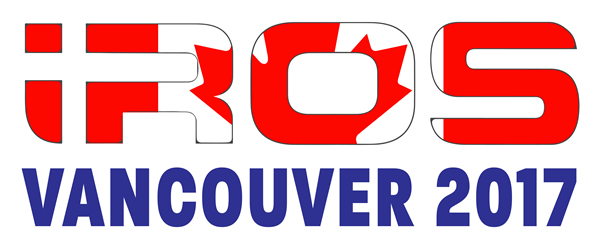
You are cordially invited to contribute abstract-only submissions to IROS 2017. Similar to the Late-Breaking Results posters at previous IROS’s, abstract-only submissions are one-page in length with a streamlined acceptance-decision process, and they are presented at the conference as posters. This component of the conference technical program is intended to reach out to the broader robotics research community, and the submissions are not peer-reviewed. Although accepted abstracts will be included in the conference proceedings, since they are not considered as publications, they will not be submitted to IEEE for inclusion in the Xplore database.
Under the theme of Friendly People, Friendly Robots, IROS 2017 particularly welcomes submissions that address technological challenges in developing friendly robots that can work effectively with, for, and around people. As always, we also invite submissions in all areas of intelligent robots and systems, their components, and applications.
Important Dates
15 July 2017 - Submission deadline (extended)
18 July 2017 - Notification of acceptance decisions
1 August 2017 - Final submission
24-28 Sept 2017 - Poster presentation IROS 2017 in Vancouver
Submission
To submit, please visit http://www.iros2017.org/contributing/call-for-abstract-only-submissions.
The IEEE Robotics & Automation Society's Conference Activities Board (CAB) is seeking proposals for organizing/hosting the 2022 IEEE International Conference on Robotics and Automation (ICRA), which will be held in North or South America. All proposals and documentation must be received by 1 August 2017, with the intention of discussing proposals during the 24 September 2017 CAB meeting held during IROS 2017 in Vancouver. Two-three Proposals will chosen to evaluated in person at ICRA 2018 in Brisbane, Australia. The final decision will be made after presentation to CAB, followed by a presentation and vote by the RAS Administrative Committee on 26 May 2018 in Brisbane, Australia.
Submission
Proposals must be submitted online here: https://app.smartsheet.com/b/form?EQBCT=268b85c8a943428386454ef4cbfae244
Deadline: 1 August 2017
An ICRA checklist has been created. Proposals should address as many of the topics as possible:
https://docs.google.com/document/d/1RJBbb_8DfxYyodWL3N3nIkAebOTHoHUFcoP9_FNtWas/edit?usp=sharing
For more information, please refer to www.ieee-ras.org/conferences-workshops/resources-for-conference-organizers
Questions? Please contact RAS@ieee.org
The IEEE Robotics & Automation Magazine is soliciting nominations for two new Associate Editors, with a term beginning January 2018. The Associate Editors play an important role in maintaining the caliber of the magazine by ensuring the quality of published articles by implementing reviews of technical features according to IEEE guidelines, soliciting interesting and topical material articles for publication in the magazine, guiding the overall direction of the publication and providing feedback from the readership through e-mail conversations, teleconferences, and twice-yearly in-person meetings held in conjunction with IEEE RAS International Conference on Robotics & Automation (ICRA) and the IEEE/RSJ International Conference on Intelligent Robots and Systems (IROS).

Associate Editor terms normally consist of a one-year probation period followed by two years of additional service if performance is satisfactory. Applicants should have a strong technical background and excellent English language skills.
Nominations should include a resume (not to exceed three pages), previous experience with publications as a reviewer or in other capacities, and areas of technical expertise. Please submit nominations as a single pdf file to Amy Reeder at a.reeder@ieee.org. The Deadline is by 1 September 2017.
Purpose
These RAS-funded projects shall create good educational materials in wide variety of RA science and technologies for broad users including young students who are beginning to learn this area and top-class researchers/practitioners/educators who need the newest deep knowledge. The developed material will be distributed worldwide at RAS webpage, IEEE Press, conference tutorials, robot competitions and/or exhibitions.
Background
As a leader in the field of robotics and automation, IEEE RAS is expected to provide good educational material to its members and general public. However, RAS does not have enough volume of such contents, except for excellent books and conference tutorials. The
new RAS webpage has no contents for education by which people can learn robotics and automation.
Examples of Contents
The projects can create some of the followings but not limited to
- open contents/courses for every RAS members (scientific/technical specialists);
- open contents/courses for general public (outreach, school teachers, children);
- material on webpage, by PDF books, multimedia contents, paper books, or whatever;
- for developing countries and regions as well as advanced countries and regions;
- for free, or partially sold by IEEE;
- may be translated into several languages (EN, CN, ES, FR, DE, KR, JP, ...); and/or
- any other contents to contribute RA education.
Funding
IEEE RAS will fund about 10,000 USD for each project for one year or multiple years. In 2014, five projects were accepted. In 2015, five projects were accepted. In 2016, four projects were accepted. In 2017, four projects were accepted. Up to five projects will be accepted in 2018. The approved project can use the budget for webpage, assisting student work, translation, meetings, travel, etc. on the basis of the proposer's budget plan with following the IEEE financial rule. A project of multiple years can be accepted, if the reason is clear.
Proposal
RAS Technical Committees (TCs), RAS MAB Education Committee (EC), or groups endorsed by TC or EC are eligible to submit a proposal. The proposal should state the following in no more than five pages:
(1st Page)
title of proposal; names and affiliations of the corresponding proposer and the group members; name(s) of TC or EC; executive summary of the proposal; way of distribution (webpage, books, etc.)
(2nd - 5th Pages)
scope (purpose, area of technical fields, target zone of education, ...); goal (contents, courses, materials, cost, ...); exams for checking the success; schedule (action plan, development process, ...); budget plan; and short CVs of the corresponding proposer and some of major members.
Submission
The proposals of project in 2018 should be submitted by e-mail to RAS VP for Technical Activities, Fumihito Arai <arai@mech.nagoya-u.ac.jp> by 30 June 2017. All the proposals will be reviewed by RAS Technical Activity Board (TAB) CEMRA Project Review Committee consisting of anonymous senior reviewers without conflict of interest. Note that this RAS initiative is planned to continue for five years in 2014-2018.
Final Project Review
The final results of accepted proposals will be reviewed on the basis of the exams stated in the proposal. All the created materials will be displayed at RAS sponsored conference (ICRA or CASE or IROS) next year. The financial report must be submitted by the deadline specified by TAB.
Important Dates
Proposal Due for 2018 Projects: 30 June 2017
Presentation for 2018 Projects: TAB at IROS2017 in Vancouver, Canada
Congratulations to the following Authors for their outstanding achievement as recipients of RAS Publication Awards! The awards were announced and presented at the IEEE International Conference on Robotics and Automation (ICRA) on 1 June 2017 in Singapore.
2017 King-Sun Fu Memorial Award: Best Paper in the IEEE Transactions on Robotics
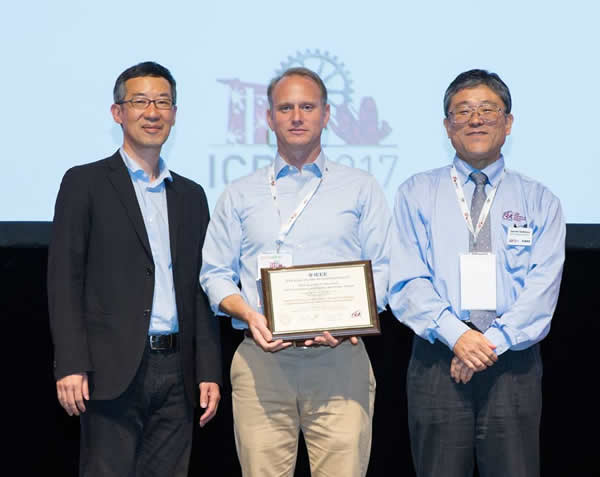
Congratulations to the following winners of the 2017 King-Sun Fu Memorial Award. This award honors the best paper printed in the IEEE Transactions on Robotics in the previous year, and was presented by Frank Park - Editor in Chief.
“Rapidly Exploring Random Cycles: Persistent Estimation of Spatiotemporal Fields With Multiple Sensing Robots”
Xiaodong Lan and Mac Schwager
IEEE Transactions on Robotics; vol. 32, no. 5, pp. 1230-1244, October 2016
IEEE Robotics & Automation Magazine Best Paper Award
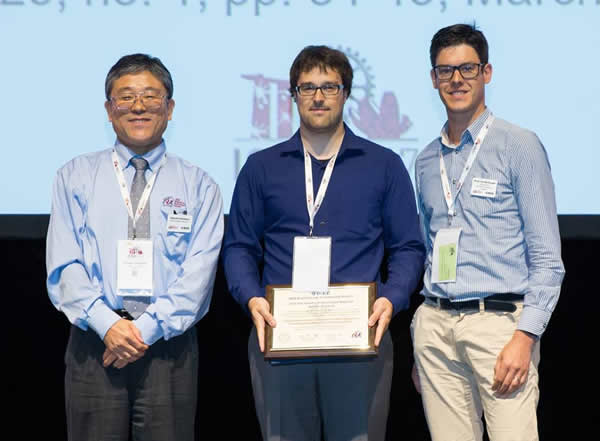
Congratulations to the following winners of the 2017 RAM Best Paper Award. This award honors the best paper printed in the IEEE Robotics & Automation Magazine in the previous year, and was presented by Bram Vanderborght - Editor in Chief.
“Practice Makes Perfect-An Optimization Based Approach to Controlling Agile Motions for a Quadruped Robot”
Christian Gehring, Stelian Coros, Marco Hutter, Dario Bellicoso, Huub Heijnen, Remo Diethelm, Michael Bloesch, Péter Fankhauser, Jemin Hwangbo, Markus A. Hoepflinger, Roland Siegwart
IEEE Robotics & Automation Magazine; vol. 23, no. 1, pp. 34-43, March 2016
NEW For 2017: IEEE Robotics and Automation Letters Best Paper Award
TWO RECIPIENTS THIS YEAR!
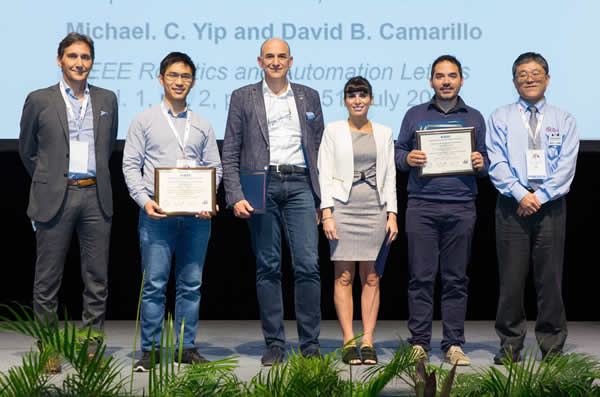
"Compliant Aerial Manipulators: Toward a New Generation of Aerial Robotic Workers"
Bartelds, A. Capra, S. Hamaza, S. Stramigioli and M. Fumagalli
IEEE Robotics and Automation Letters; vol. 1, no. 1, pp. 477-483, January 2016
"Model-Less Hybrid Position/Force Control: A Minimalist Approach for Continuum Manipulators in Unknown, Constrained Environments"
Michael. C. Yip and David B. Camarillo
IEEE Robotics and Automation Letters; vol. 1, no. 2, pp. 844-851, July 2016
We are pleased to announce a Special Issue on "Control and Motion Planning for Nonprehensile Dynamic Manipulation".
MOTIVATION AND OBJECTIVES
The robotic manipulation problem aims at finding a set of suitable controls to lead the configuration of an object to a desired pose. However, can we do such an action only by grasping? In truth, thanks to the high dexterity of the human hand, a manipulation task can be achieved also in nonprehensile –the object is not grasped –and dynamic –dynamics is exploited to control the motion– ways.
The state of the art of robotic manipulation is still rather far from the human dexterity in the execution of complex motions, such as in nonprehensile dynamic manipulation tasks. This may reduce the opportunities for wide adoption of robots within human co-habited environments. Nonprehensile manipulation is considered as the most complex category of manipulation, requiring adhoc controllers and specialized hardware. Since the object is not caged between fingertips, the part is moved exploiting its dynamics, and it is possible to increase the workspace by throwing and catching the object. As examples, think of a juggler, or a pizza maker or even of a surgeon pushing away organs, arteries, or making sutures. In several industrial applications, it is not directly possible to manipulate the object through firm/fine/precise manipulation, therefore only nonprehensile manipulation is allowed (e.g., using vibratory platforms). In case of deformable objects, for instance, the related tasks become even more challenging. The control design must carefully take into account dynamic models of both the robot and the object, posing thus new challenges in high-speed sensing, motion planning and control.
This Special Issue aims at collecting the latest results achieved by the researchers working in motion planning and control of robots for nonprehensile dynamic tasks involving manipulation. Moreover, people working on hybrid and switching dynamical systems may find several points in common with the subjects addressed within the letters submitted to such Special Issue. The sought ambition is to provide the groundwork to stir the current idea of robot manipulation that is still too much conceived as simple pick-and-place applications. This might be the starting point within the research community to arise future discussions regarding possible expectations, open-topics, longterm goals and enhance collaboration among research teams.
LIST OF TOPICS
The list of topics include, but it is not limited to:
- Nonprehensile dynamic manipulation
- Nonlinear control of hybrid dynamic systems
- Impedance and force control in robotic dynamic manipulation tasks
- Motion planning for nonprehensile robot manipulatioN
The Special Issue will cover both motion planning and control aspect to achieve the object manipulation in a nonprehensile way. Moreover, the shared connections with other similar control problems, like piece-wise smooth and impacting systems are welcome.
IMPORTANT DATES
Special Issue Submission Opens: 20 July 2017
Special Issue Submission Closes: 30 July 2017
First Decision Communicated to Authors: 24 October 2017
Final Decision Communicated to Authors: 28 December 2017
Accepted RA-L Papers appear on IEEE Xplore: 16 January 2018
GUEST EDITORS
Fabio Ruggiero (Università di Napoli Federico II)
Vincenzo Lippiello (Università di Napoli Federico II)
Bruno Siciliano (Università di Napoli Federico II)
ORGANIZATION OF THE SUBMITTED PAPERS
Papers are six-page long in two column IEEE format, including figures and reference. Up to two extra-pages (at fee) are allowed.
Links to multimedia material are welcome.
RA-L is an electronic-only journal. The final version provided by the authors will be rapidly posted on IEEE Xplore: submitted manuscripts will be either published within January 16, 2018 or rejected.
PAPER SUBMISSION
Please, start to prepare your material and be ready for the opening of the submissions (20 July 2017).
To submit the paper:
- Go the RA-L PaperCept site http://ras.papercept.net/journals/ral
- Log-in and select to submit a new paper to IEEE RA-L.
- Select our SI within the menu "Select the type of the submission".
- Follow the instructions to submit your material.
More information can be found at the following link: http://www.ieee-ras.org/publications/ra-l/submission-procedures
This Article was originally published in the IEEE Society Sentinel (2017-05-10 Vol. 22, No. 09)
To help bring new research findings to the practitioners who can apply it, the IEEE Robotics and Automation Society (RAS) implemented a Note to Practitioners feature in one of its publications. “For each paper we include a second abstract, the ‘Note to Practitioners’, where the authors address non-academic readers, explaining the primary applications, insights, and limitations of the paper in plain language avoiding jargon,” notes Ken Goldberg, UC Berkeley Professor of Engineering and co-founder and Editor-in-Chief emeritus of the IEEE Transactions on Automation Science and Engineering (T-ASE).
Summarizing the paper in this way, the Note to Practitioners connects research and practice.
“The IEEE Periodicals Review and Advisory Committee (PRAC) review was highly complimentary about this feature and considers it a best practice. Other Societies and Councils could consider implementing it in their own publications to engage non-experts,” says Goldberg.
The IEEE Transactions on Automation Science and Engineering (T-ASE) publishes fundamental papers on Automation, encouraging interdisciplinary approaches from computer science, control systems, electrical engineering, mathematics, mechanical engineering, operations research, and other fields. T-ASE welcomes results relevant to industries such as agriculture, biotechnology, healthcare, home automation, maintenance, manufacturing, pharmaceuticals, retail, security, service, supply chains, and transportation. T-ASE addresses a research community willing to integrate knowledge across disciplines and industries. For this purpose, each paper includes a Note to Practitioners that summarizes how its results can be applied or how they might be extended to apply in practice.
“The Note to Practitioners has been a requirement for all T-ASE papers since 2004. We believe this has been very successful and may be of interest for other IEEE publications,” says Goldberg.
Daniela Rus, Professor of Electrical Engineering and Computer Science and Director of the Computer Science and Artificial Intelligence Laboratory (CSAIL) at the Massachusetts Institute of Technology (MIT) received the 2017 Engelberger Robotics Award for Education at a special ceremony on 5 April 2017.
The award is named for Joseph F. Engelberger, known throughout the world as the ”father of robotics.” Engelberger was founder and president of Unimation, Inc., the world's first industrial robot manufacturer. The Engelberger Robotics awards are presented to individuals for excellence in technology development, application, education and leadership in the robotics industry. Winners receive a $5,000 honorarium and commemorative medallion with the inscription, "Contributing to the advancement of the science of robotics in the service of mankind." The awards recognize outstanding individuals from all over the world. Since the award’s inception in 1977, it has been bestowed upon 124 robotics leaders from 17 different nations.

Daniela Rus is recognized for her leadership as a researcher, innovator and educator in the field of robotics. Her research group, the Distributed Robotics Lab, has developed modular and self-reconfiguring robots, systems of self-organizing robots, networks of robots and sensors for first-responders, mobile sensor networks, techniques for cooperative underwater robotics and new technology for desktop robotics. They have built robots that can tend a garden, bake cookies from scratch, cut a birthday cake, fly in swarms without human aid to perform surveillance functions and dance with humans. The lab has also worked on self-driving golf carts, wheel chairs, scooters, and city cars with the objective of reducing traffic fatalities and providing technologies for personal mobility for the elderly population. Companies such as iRobot and Boeing have commercialized innovations drawn from Dr. Rus’ research. She is the first woman to serve as director of the Computer Science and Artificial Intelligence Laboratory (CSAIL) and its predecessors the AI Lab and the Lab for Computer Science.
The 2017 IEEE/RSJ International Conference on Intelligent Robots and Systems will bring approximately 2500 robotics and automation experts who attend to network with colleagues, learn the latest innovations, and meet with vendors who supply important products and solutions to technical problems. The exhibition is closely integrated with the technical program through workshops and tutorials, plenaries, mini-plenaries, interactive sessions, robot demonstrations, an industrial innovation showcase, and social activities for attendees and guests.

IROS 2017 will be held in Vancouver, BC, Canada from 24-28 September 2017
Download the IROS 2017 Sponsor and Exhibitor Prospectus
Download the application for exhibit space and sponsorship
For additional information, please contact us at exhibition@iros2017.org
The 2017 IEEE International Conference on Robotics and Automation (ICRA) will be held from 29 May-3 June 2017 at Sands Expo and Convention Centre, Marina Bay Sands in Singapore. ICRA is IEEE Robotics and Automation Society's flagship conference and is a premier international forum for robotics researchers to present their work.
CONFERENCE UPDATES
The Technical Program is now available: https://ras.papercept.net/conferences/conferences/ICRA17/program/
All papers at ICRA2017 will have the same type of presentation in a session: a brief 5-minute spotlight talk in series, followed by a 35-minute interactive presentation in parallel. Please refer to the speaker instructions page
for details: http://www.icra2017.org/conference/speaker-instructions
Early and advance registrants for ICRA2017 (before 15 May 2017) in the standard and student registration categories will receive a free 7-inch tablet containing the conference proceedings and conference app as part of the registration package. This is the first time that ICRA attempts to innovate on the distribution of conference proceedings and conference program to delegates. There will be NO USB proceedings nor printed conference program digest book given to delegates. The conference digest book and paper proceedings will be pre-installed in the tablet. The conference app also has a cloud-based web portal for information distribution and sharing. Details on collection and use of the tablet will be announced in May 2017. Tablets for onsite registrants are subject to availability.
Online registration closes on 15 May 2017
Industry Forum
Runs on 30-31 May. Speakers include representatives from KUKA, ABB, Kinova, Savioke, Kuang-Chi Institute of Advanced Technology, ST Aerospace, Nvidia, and more.
Speaker list is here: http://www.icra2017.org/conference/forums/industry-forum
RIE Robotics, Innovation and Entrepreneurship Forum
ICRA 2017 will introduce a new Robotics Innovation & Entrepreneurship (RIE) Forum that aims to bridge technological advances with real-world problems. The forum will connect promising start-ups with industry leaders in key application domains. New hybrid format forum on May 30 and 31 connects robotics start-ups with investors like Armstrong Industrial Corporation, BP Digital Innovation Organization, Clear Water Bay Startup Fund, and GreenMeadows Accelerator. Industry leaders in key domains such as autonomous driving, logistics, healthcare, service, collaborative manufacturing and education and social will share current real-world needs. See the participating changemakers here: http://www.icra2017.org/conference/forums/rie-forum
The RIE Forum will be held on 30-31 May 2017 and features six industry focus areas: Autonomous Driving, Service, Healthcare, Logistics, Education & Social, and Collaborative Manufacturing.
Start-up Corner
ICRA 2017 welcomes start-up companies to market their products and services to a highly relevant audience of robotics and automation researchers, developers and industry leaders. Start-ups will have the opportunity to showcase and demonstrate their products in a highly interactive environment within the exhibition area at ICRA 2017.
In addition, selected start-ups can pitch their innovations at the Robotics Innovation & Entrepreneurship (RIE) Forum in one of the six industry focus areas, namely, Autonomous Driving, Service, Healthcare, Logistics, Education & Social, and Collaborative Manufacturing.
For more information see: http://www.icra2017.org/sponsors-and-exhibitors/start-up-corner
Please contact ICRA 2017 Secretariat at sales@icra2017.org
or call +65 6389 626 to secure your space at the ICRA 2017 Start-up Corner.
IEEE and RAS to provide a FREE Workshop during the IEEE International Conference on Robotics and Automation (ICRA 2017) will be held from 29 May-3 June 2017 at Sands Expo and Convention Centre, Marina Bay Sands in Singapore.
![]()
Sharing open source is becoming a norm among researchers in all fields of science. But it is not always clear why it’s important and how to do it in the best possible way.
During the workshop, we will talk about best practices in computational reproducibility and reuse. In addition, we will introduce a new service provided to IEEE authors called Code Ocean. For the first time, IEEE authors can upload code and data in 10 programming languages* and link a working code in a computational environment with the associated article. By the end of this workshop, participants will be able to publish their conference algorithm, making it automatically available on their article page in IEEE Xplore. That algorithm can be cited using a dedicated Digital Object Identifier (DOI) in addition to the article citations.
The platform provides open access to the published software code, data, and results to view and download for everyone. Users can execute all published code without having to install anything on their personal computer. Everything runs in the cloud on CPUs or GPUs according to the user needs.
* Python, R, Matlab, Octave, Java, Julia, C/C++, Fortran, Perl, Lua.
REGISTRATION
The Workshop will be held on Friday, 2 June 2017 from 9:00-11:00
Register for this FREE Workshop here: http://bit.ly/2pHvikd
Code Ocean is a cloud-based executable research platform that provides researchers and developers an easy way to share, discover and run code published in academic journals and conferences.
Explore algorithms: http://bit.ly/2oRpJhE
IEEE AND CODE OCEAN
IEEE publishes a large volume of articles that reference code and algorithms, but - until now- readers had no way to interact with the code and simulations. Readers were only able to read the algorithms or download static supplemental files.
IEEE is excited to partner with Code Ocean, a cloud-based executable research platform that allows gives authors the ability to upload their algorithms so that other IEEE Xplore users can discover, view, and run them in real-time. This additional interactivity allows users a more robust and efficient way to experiment with algorithms, reproduce the research, and develop new algorithms.
By using Code Ocean, researchers, engineers, developers, and scientists can upload code and data in 10 programming languages and link a working code in a cloud-based computational environment with the associated IEEE article. A Digital Object Identifier (DOI) is assigned to each algorithm that further promotes correct attribution and improves citations.
A special issue on "Human Cooperative Wearable Robotic Systems" is planned for the IEEE Robotics and Automation Letters (RA-L).
All the submissions should present original works under the RA-L terms. As a joint event with the IEEE International Conference on Advanced Robotics and Mechatronics (ICARM 2017), authors from all accepted special issue papers are cordially invited to participate in the special session "Human Cooperative Wearable Robotics" of the ICARM 2017 conference. Rejected papers by RA-L letter are possible to be accepted by the IEEE ICARM 2017 after necessary revisions as well, and will be presented in the same special session.
Potential authors can contact the special issue Guest Editors for questions and clarifications:
Fei Chen - fei.chen@iit.it
Zhijun Li - zjli@ieee.org
IMPORTANT DATES
Special Issue Submission Opens: 10 May 2017
Special Issue Submission Closes: 15 May 2017
First Decision Communicated to Authors: 9 August 2017
Final Decision Communicated to Authors: 13 October 2017
Accepted RAL Papers appear on Xplore: November 2017
INTRODUCTION
Intelligent techniques foster the dissemination of new discoveries and novel technologies that advance the ability of robotics to assist and support humans. Intelligent robots aim to understand the increasingly coupled relationships between human and machine. With the increasing trend towards home service and health care, we are faced with a need for improved control systems of human-centered assistive and rehabilitation robots capable of performing in the unstructured environments. Although big progress has been made in the recent years, there are still open issues due to the limitation in technology, but also the insufficient knowledge about the human.
The special issue addresses a broad spectrum of topics within wearable robotics. Special attention should be given to the integration of robotics with intelligent control technology, cognitive science and bio-mechatronics systems with the goal of developing new multi-dimensional robotic services. This includes mechanism modeling and design, model identification and intelligent control, cognitive computing, biological signal processing, neural impedance adaptation, tele-operation and tele-manipulation, robot learning from human demonstration and cognitive modeling for human-robot interaction or collaboration. The special issue publishes original papers of innovative ideas and concepts, new discoveries and improvements, and novel applications and business models relevant to the field of human robot interaction.
RELEVENT TOPICS
- Design, modeling and control of wearable robots and exoskeletons
- Novel development of human-in-loop cooperative robotic/mechatronics systems and applications
- Impedance control and shared control for human robot cooperation
- Intelligent control of prosthetic robots for the disabled
- Biological signal processing, modeling and control
- Development of bio-mechatronic systems for human-centered intelligent robots
- Robotic tele-operation and tele-manipulation
- Neuro-robotics for innovative computation and control
- Human motion understanding, intention estimation and sensorimotor learning
THE SPECIAL ISSUE IS SUPPORTED BY
IEEE RAS Technical Committee on Telerobotics
IEEE SMC Technical Committee on Bio-mechatronics and Bio-robotics Systems
The 10th International Workshops on Human-Friendly Robotics 2017
2017 IEEE International Conference on Advanced Robotics and Mechatronics (ICARM'17)
The Student Activities Committee (SAC) of the IEEE Robotics and Automation Society is seeking motivated students to serve as Regional Student Representatives (RSRs) for one year. If you are a graduate student who is passionate about robotics, organized, communicative, and driven to help others in your community - please consider applying to be the RSR for your region (https://www.ieee.org/societies_communities/geo_activities/regional_world_map.html) today!
Regional Student Representatives are expected to attend regular meeting with SAC members, distribute information to student chapters within his or her region as requested, welcome and assist newly formed student chapters, update chapter contact lists through the RAS website, and provide regular updates and photos for SAC social media announcements. RSRs are also highly encouraged to promote various robotics activities within their regions in order to strengthen the local robotics network. Ideas for new activities are always welcome, as is an analysis of how to improve future activities!
Interested applicants should be:
- Self-motivated
- Organized
- Responsive to e-mail discussions
- Able to commit weekly time to RSR material, and to specific activities (e.g. reviewing volunteer proposals, organizing regional activities, etc.)
- Graduate-level engineering student in robotics or related field
To apply, please prepare a zip folder containing
- Short resume (no more than 2 pages) highlighting community service and IEEE experience
- Cover letter specifying applicant’s interest in serving as an RSR and relevant experience
- Letter of recommendation from professor (preferably a current IEEE member)
Email the folder to ras_sac@ieee.org with the subject line “RSR Application” by 1 May 2017
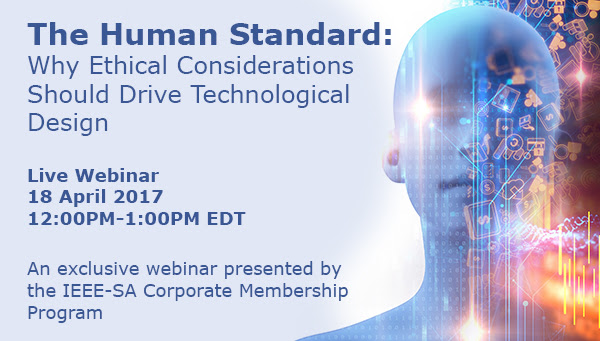
18 April 2017 at 12:00PM- 1:00PM EDT
In the age of autonomous and intelligent machines, it is more important than ever to help technologists and organizations be cognizant of the ethical implications of the products, services or systems they are building and how they are being built before making them available to the general public. While established Codes of Ethics provide instrumental guidance for employee behavior, new values-centric methodologies are needed to complement these codes to address the growing use of algorithms and personalization in the marketplace.
Key insights from the Working Group Chairs of three IEEE-SA projects will be presented. The IEEE Global Initiative provided the input and recommendations that led to the creation of Working Groups for these IEEE-SA standards projects:
IEEE P7001™: Transparency of Autonomous Systems
IEEE P7003™: Algorithmic Bias Considerations
Speakers will provide their perspectives on why it is important for business leaders to increase due diligence relative to ethical considerations for what they create. This focus is not just about avoiding unintended consequences, but also increasing innovation by better aligning with customer and end-user values.
REGISTER NOW!
RAS is pleased to arrange three networking Luncheon events for our Members attending ICRA 2017 in Singapore. Space is limited for these popular events. Don't miss the chance to attend either or both because the space has been filled. Advanced registration is required. Register Now! http://www.icra2017.org/registration-and-travel/registration
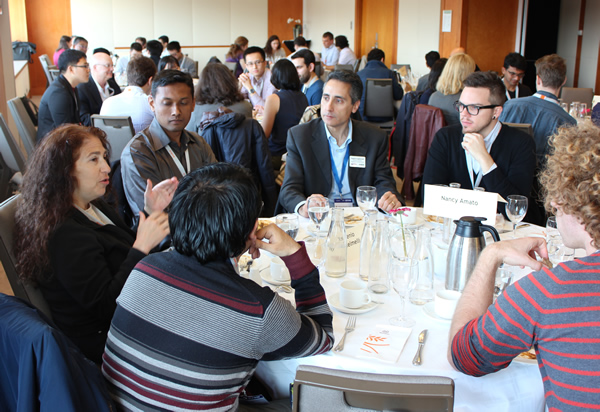
RAS Women In Engineering (WIE) Luncheon
Tuesday, 30 May 2017
12:45-13:45
Marina Bay Sands, Singapore
The luncheon provides the opportunity to foster discussion on the role of women in robotics and automation, inspire girls and promote collaborations and initiatives to advance women in leadership. As the goal for this event is to be more than a lunch for women, but a lunch with women. Therefore, men are more than welcome to participate and enjoy the discussion.
Guest Speaker: Barbara Mazzolai, Center for Micro-BioRobotics, Istituto Italiano di Tecnologia, Italy
RAS Lunch with Leaders - LwL (for Students)
Wednesday, 31 May 2017
13:30-14:30
Marina Bay Sands, Singapore
This luncheon is open to student attendees offering the chance to meet and interact with and leaders from RAS. At ICRA 2017, the format of the luncheon will be modified slightly, each table will be associated with a focus area and several discussion topics. Leaders will be paired with tables according to their interests and background.
Confirmed Leaders to include: RAS President Satoshi Takodoro, RAS Past President Raja Chatila, RAS Sr Past President David Orin, RAS President-Elect Ning Xi, Antonio Bicchi, Peter Corke, Torsten Kroeger, Ron Lumia, Raj Madhavan, Yasushi Nakauchi, Allison Okamura, Jing Xiao, Hong Zhang
Young Professionals Luncheon
Wednesday, 31 May 2017
13:30-14:30
Marina Bay Sands, Singapore
Under the umbrella of IEEE Young Professionals program, the Robotics & Automation Society (RAS) is further empowering its young professionals through the RAS Young Professionals (YP) group. This year’s event brings together representatives from the IEEE RAS Publication Activities Board and RAS Young Professionals to enjoy a meal and open discussions on important topics relating to the publications in our society, such as:
- What are the obstacles that delay the Submission to feedback-to-Authors procedure?
- What is required to extend a workshop/conference publication to a journal article?
- Open access vs traditional publications
- Why robotics journal impact factors are lower than the human science (or similar) fields?
We expect short presentations from EiCs and Editors of RAS Journals, followed by questions from the YP community.
Confirmed RAS Publication Leadership:
Eugenio Guglielmelli (Vice-President – Publication Activities)
Kyu Jin Cho (Associate Vice-President - Publication Activities)
Frank Park (IEEE Transactions on Robotics Editor-in-Chief)
Bram Vanderbrought (Robotics and Automation Magazine Editor-In-Chief)
Lorenzo Sabattini (Robotics and Automation Magazine Editor)
Yi Guo (Robotics and Automation Magazine Editor)
Hu Hesuan (Robotics and Automation Magazine Editor)
Ning Xi (Representative to the IEEE Sensors Journal)



